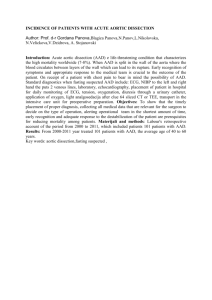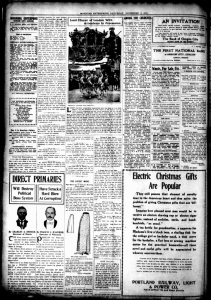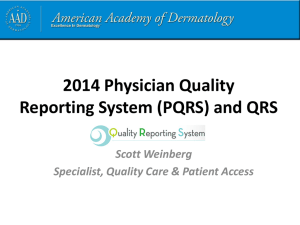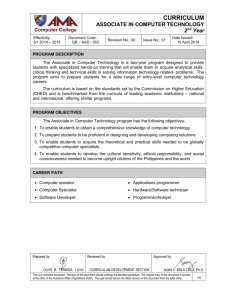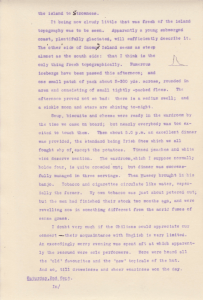COMMISSION 1 1/6 Dr. Lawreace
advertisement
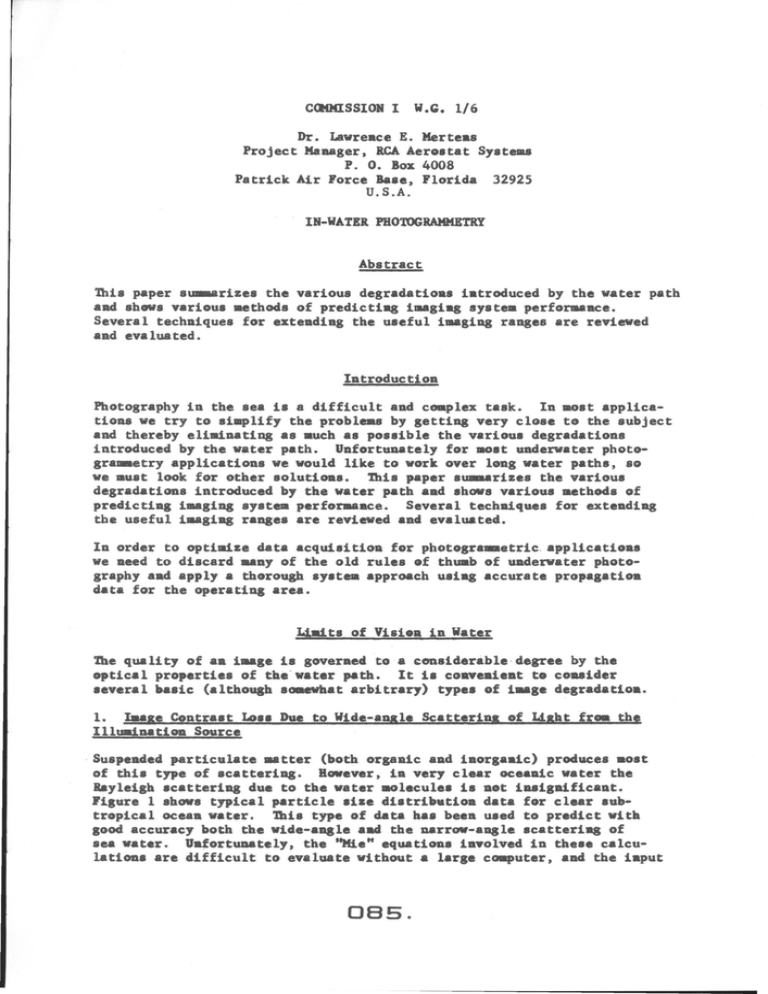
COMMISSION 1 W.~. 1/6 Dr. Lawreace E. Merteas Project Maaager, RCA Aerostat Syateas P. 0. Box 4008 Patrick Air Force Base, Plorida 32925 U.S.A. IH-WATER PBOTOGRAHMBTRY Abstract lhia paper su..arizes the varioua degradatioas iatroduced by the water path aad ahawa various aethods of predictiag iaagiag syatea performaace. Several techaiques for exteadiag the usefu1 imagiag raagea are reviewed aad evaluated. latroductioa Pbotography ia the sea is a difficu1t aad co.plex task. In aost applicatioas we try to siaplify the probleas by gettiag very cloae to the aubject aad thereby e1i.taating as auch as possible the varioua degradations introduced by the water path. Unfortuaately for aost underwater photogr...etry applications we would like to vork over long water paths, so we auat look for other solutioas. this paper au.aarizea the various degradations iatroduced by the water path aad ahowa various aethods of predictiag iaaging aystea perfor.aace. Several techai~ues for exteadiag the useful iaagiag raages are reviewed and evaluated. In order to optiaize data acquiaitioa for photogra. .etric. applicatioaa we need to diacard ...y of the old rulea of thuab of underwater pbotography aad apply a tborough systea approach usiag accurate propagatioa data for the operatiag area. Liaits of Visiea in Vater !he quality of aa iaage is goveraed to a ~onaiderable degree by the optical propertiea of tbe· water patb. lt ia coaveaieat te couider aeveral ~aale (altbougb eo.ewhat arbitrary) typee of iaage degradatioa. 1. laage eontraat Lose Due to Wide-angle ScatteriDI of Llabt fr .. the Illuainatioa Source · Suapeaded particulate aatter (botb orgaaic aad iaorgaaic) producea aost of tbis type of acatteriag. Hawever, ia very clear oceaaic vater the Bayleigb scattering due to tbe water aolecules is aet iasigaificaat. Pisure 1 shova typical particle size distrib•tioa data for clear subtropical oceaa vater. !bis type of data haa beea used to predict with good accuracy both the wide-aaale aad the uarrov-aagle scatteriag of sea vater. Uatortuaately, the "Mle" equationa iavolved in these calculationa are difficult to evaluate vitbout a large co.puter, aad the iaput 085. data on particle size distribution and indices of refraction are seldom available. This type of contrast loss generally limits the useful visibility range to less than four attenuation lengths with ambient light fields and to considerably less distance than that when the dominant illumination source is close to the camera (or receiver, eye, etc.). Figure 3 shows typical loss of contrast for horizontal paths in ambient light. Range-gating and volume-scanning techniques are useful in reducing the wide-angle backscatter. 2. Narrow-angle Forward Scattering of Light from the Target This type of scattering is produced by both suapended particles and refractive inhomogeneities in the water. Diffraction theory tells us that very narrow-angle scattering is produced predominantly by relatively large suspended particles (which normally have indices of refraction relatively close to that of sea water). A small fraction of the imageforming light will pass through the water without interacting with the suspended particles. This fraction is commonly referred to as the "direct light" component. It too will be slightly deviated in direction due to refractive inhomogeneitles along its path. These refractive inhomogeneitles are pro.d uced by temperature and/or salinity fluctuations. Tempereture fluctuation can be very large where warm and cold layers of water are mixing near a thermocline. Under good conditions, however, sea water often has rms temperature fluctuations of less than 0.0010 Celsius. For these cases, image details subtending less than one milliradian can be recorded even over long propagation paths. The optical effects of inhomogeneitles in water can be roughly predicted using theories originally developed for astronomical viewing through the earth's atmosphere. Unfortunately, there exists little data on the temperature and salinity microstructure of sea water. Figures 4 and 5 illustrate the loss of resolution as a function of path length for clear coastal water. 3. Light Loss Due to Absorption and Scattering Sufficient photons must be available in each resolution element in order to be able to record useful images. In many cases insufficient light will be the fundamental operating limit. Light loss in water is, in general, governed by exponential type relations. Light in the blue-green wavelength region propagates best in most types of relatively clear water. The color selectivity of water is principally due to the characteristics of the water molecule. Most of the dissolved and suspended substances in sea water have little additional spectral effect. One exception is the socalled "yellow substance", which occurs fre,quently in coastal waters. It shifts the best propagation wavelengths toward the green region. Whenever long light paths in water are involved, it is very important to use a light source which emits significant energy at the best propagating wavelengths. This seems very obvious but unfortunately can easily be overlooked. For example, it is generally conceded that mercury vapor lamps provide illumination superior to incandescent lamps for many long-range underwater viewing applications. This is due to the very large component of incandescent long-wavelength light, which is heavily absorbed by the water. The mercury arc emission lines are closer to the water's passband, so the average attenuation over the water path is less. However, if we use 086. syste.s with very low light Ievel capability over very loag raage in water, we find the iacaadeacent lamp to be superior (i.e. providea aore light tbrouah the patb). the reason for tbis ia that the iacaadeaceat lamp emits a contiauua of waveleagths, soae of which are ia the best propagatlag regioa. Evea though only a very small fraction of the iacaadeacent laap'a eaiaaioa ia at these waveleagths, the propagation iaprov•eat 1a a auch aore iaportaat factor. Sigaificaat light can also be lost due to particulate acatteriaa. !bis scattered light is aot always haraful aad, depeadiag oa the specific Situation, may be useful. 4. Local Effects of the Water Differeaces in index of refractioa, teaperature, and pressure betweea the iaterior and exterior of the vater light housiags caa cauae haraful effects ualeas suitably co.pensated. Soae of the more dominant effects include optical aberratioas at the port, phyaical distortion of the port, and thermal expansion or coatractioa which chaages critical diaensioaa ia the lenses and caaera. Analytical Technigues for Predictias Perforaance and Desisains Systems Various aodela aad analytieal techaiques have beea developed which permit us to evaluate the Iimits on iaaging which were outlined in the preceding section. In some areas, such as the optical perforaaaee of ports, the aaalysia ia quite aceurate. In other areas the accuraey is relatively poor. A predietion aecurate to 20 or 30 percent aight be the best possible. Oae of the fundaaeatal difficulties frequeatly is tbe lack of good data concerDiag tbe water properties. Another difficulty is the coaplexity of certain coaputations and tbe lack of easily visualized or intuitive approaches. Kost available optical propagatioa data for water is based on "poiat" or very short path measuremeats. The aceuracy degradation ia obvious when ve use, for example, atteauation data based oa 1-aeter path measureaents to predict light losaes for a 30- or a 100-aeter path. The Volu.e Scattering Function (VSF) is the aost frequently used approacb for describing the directional scattering properties of water. the aajor problea ia usiag the VSF for i . .giag syatea aaalyses is that it haa aeldoa beea aeasured for aaglea less than 1 degree, whereas for imaging systeas we are critically iatereated in angles which are saaller by ordere of magnitude. Furtheraore, the VSF baaieally describes single seatteriag, aad propagatioa over long distances is doainated by higber order scattering. Use of the VSF in aultiple seattering probleas is quite possible, but the aath..aties beco.es very eoaplex. A little over a decade ago, the coaeept of Modulation Transfer FUDctioa ~tr) for the water path was introdueed. A simple relation was developed so that MTF's aeasured for one water path length could be used to deteraiae the MtF for any other path length. Aceuracy loss would still occur, of course, if short path data vere extrapolated to great distances. More reeeatly, long patb meaaureaents of the spreading of narrow light beama (called Beam Spread Functions) bave beea aade. the BSP and a related 087. function, the Point Spread FuactiOD (PSP), have been shown to have a direct relation to the MTF. Measureaeats at one range caa thus be extrapolated for use at other rangea. By eaploying two-diaenaional Fourier Transfora techniques (or a baaically equivalent coavolution technique) we caa relatively coaveaiently aad accurately aodel and aaalyze long-path iaagiag ayst.... Por syateas with shorter paths, the aultiple-scatteriag aspecta can soaetiaes be approxiaated, and further siaplificatioa ia the aaalysia beco.es feasible. Iechaigues for Exteadiag I .. ge Systea Range It is difficult aad hazardoua to uake br..d geaeralizatioas of loag-raage iaagiag systea perforaaace. However, ia erder te place soae of the iaagiag systea tecbaiquea ia perspective, ao.e perforaance generalizatioas will be offered here. Wbea aot liaited by light level we can see and recerd iaages of highcoatrast targets up to about four attenuatiort lengths* by using ambient light. this raage is iafluenced by the viewing directioo (relative to the zeaith). Spectral filtering can provide soae centrast iaproveaeot if the doaiaant coapoaeats of acattered light have significantly shorter patha thao direct-i.age light. Methods for iocreasing recorded i ..ge cootrast, such as high-contrast fila, high-cootrast developaent, i .. ge processing, etc., can also be helpful but can seldom extend the aaximua useful raoge by more than one attenuation length. (See figure 3.) Wben the doainant illuaination source ia oear the receiver, the aaximum useful raoges will be aubstantially reduced. Ranges of one to tvo atteauation lengths are aot unreasonable. There have been built several systeas which use a very large separation between the light source aod the camera. Depending oo the systea, the source may be placed either to the side, in front, or behind the caaera. Each approach offers its GWD advantages aod disadvaatages vith respect to mechanical simplicity, uniforaity of illuaination, light loss, etc. An iaproveaent of one attenuation length or perhaps slightly aore can be realized over more conventional systeas, depending oo the specific geometry. Any of these approaches will not oormally exceed the performance of the aabieat light systea. If it is practical to polarize the source light, a "crossed" polarizer at the receiver can reject a large portion of the contrast-reducing light vhich ia scattered by the suspended particulate aatter. It is feasible to reduce this uawanted acattered light by a factor up to about eight, but at the expense of considerable light loss and the possibility of also rejecting apecular-type targets. (See figure 6.) Circular aod linear polarization seea to provide about the same caacellatioa perforaance, but circular techniques have practical advantage in not requiring careful aligament. Scattered-ligbt componeats can be miniaized by using narrew-angle illuaination and a corresponding narrow-receiver field of view. Vieving ranges of five attenuatioo leogths have been achieved witb a low-light TV (*) An attenuation leagtb is 1/c, where c is tbe voluae attenuation eoefficient. 088. uaiag 1-aeter souree-eaaera separatioa and a field of viev of only a few degreea. Carryiaa tbis narrow-angle approach to aa extreme produces tbe so-called synchroaous-acamaiag or voluae-scanaiaa systeas. Ia theae ayatem. ve use light aouree aad receiver fields of viev oa the order of a .tlliradian and acan thea together in systematic faahioa over the deaired picture area. Imagiag raases of up to eight attenuatien lengths have beea demonatrated for source-receiver Separation of 1 meter and iaage reaolution of about 1 ailliradiaa. Aaother versioa of the synchroaoua scanaiag systea achieved a viewing raage of four attenuation lengths usiag the saae port for both tbe source and receiver. The effective source-receiver separatioa for this systea was oaly a few centimeters. Very-aarrow souree and receiver bea. .idths helped reject the larae, uawanted scattered-light compoaeats. Syachroaous scaaaiaa systea desiga iavolves a co.pro.ise betveea Source-receiver separatioa, resolutioa, received signal-to-aoiae level, aad practical scanning probleas. Range gating using very short (nanosecond) light source pulaes is a very effective vay of rejecting back scatteriag. Uafortuaately the preseatly available laser light sources are very expensive, large, aad inefficient. At the present state of the art, raage-gated systeas aay reach a light level (photon) liait long before they reach a contrast li.tt. Wbea suitable pulsed light sources becoae available, vide-aagle vieviag systeaa for up to about eight attenuation lengths will be possible. However, as we try to iaage much further thaa tbis we will fiad that forvard scattering of iaage light from the target will become troublesaae. Rejectioa of uawaated forward-scattered light by raage gating is not practical due to tbe very saall path length and heace tt.e differences. lhe forwardscattered e011poneat caa be miniaized by reducing the area of the target vhich is illumiaated at aay one time. Thus systeas of very-loag-range and wide vieving angle will need to iacorporate both raage-gatiaa and synchronous-seaaning techaiques. the ultiaate liaitatioa on visual range for in-water systeas not eaploying aabieat light is the light lose over the propagatioa path. With the techaiques available to-day we caa solve the contrast loss problem using iacreased separatioa, polarization discriaination, raage gating, synchronous scanning, etc. Unfortunately, relatively saall improvements ia visual range iavolve exponeatially increasing difficulty (i.e. cost, complexity, etc.). Careful systea analysis and engineering is required to match performaace to cost and other factors. 089. GAY (TONGUE OF THE OCEAN) TOTO SURFACE (TONGUE OF THE OCEAN) TOTO/ DEEP DIAMETER FIGUR! 1 (JL) Particle size distributioaa for coastal aad sea water near Aadros IslaDd, Bahaaas, measured with a Coulter counter by H. Gordoa, H. Bader, 0. Browu of the University of Miaai. Graph shows nuaber of particles per al greater in diaaeter than shown on the abscissa. 090. FIGURE 2 PIGURE 5 Photograph of a pu1sed 1aser beam showing particu1ate scattering. Beam was near1y co11imated, and the coasta1 sea water bad a vo1ume attenuation coefficient of .2 m-1 Camera bad a 35mm (foca1 1ength) 1ens and was approximate1y 1.3 m from the beam. Photographs illustratiag loss of resolutioa due to large refractive iahamogeaieties ia the vater patb. C...ra was 45 aeters froa a backlit 10 x USAF resolutioa target. the voluae atteauatioa coefficieat of the coastal sea vater was approxi. . tely .2o.·l for both photographs. Teaperature fluctuatioas were approxi.. tely 10 tiaes greater for the pbotograph oa the rigbt. 091. 10 m 15m 20 m 25m PIGURE 3 Pbotographa of a 10 x USAP reaolution chart, large logarita.ic bar chart, and grey acale in aabieat light. Caaera to target raages are iadicated. Water was S aetera deep aad bad an atteauation coefficieat of .13 a-1. Pbotograpba in left colu.a uaed Paaataaic X film, those ia the right colwm used a high coatraat fila (Y• 4.7). 092. 10 m 20 m 30 m 40 m 50 m 60 m FIGURE 4 Photographs of a backlit 10 x USAF resolution target at ranges from 10 to 70 meters. Ambient light was negligible and the coastal sea water attenuation coefficient was 0.21 m-1. Ihe standard deviation of the water's temperature fluctuations was about .002°C when the longer ranges photographs were taken. 70 m 093. 16 sec 4 sec 1 sec 25 sec FIGURE 6 Cancellation of single and multiple scattered light using crossed linear polarizer. Camera was aimed along a collimated 488 mm laser beam with a .6 m lateral separation. Photographs on left bad the linear polarizer parallel to the laser polarization axis. Photographs on the right the polarizer crossed. Exposures were f/4.0 for the indicated times. OSL:&:.
